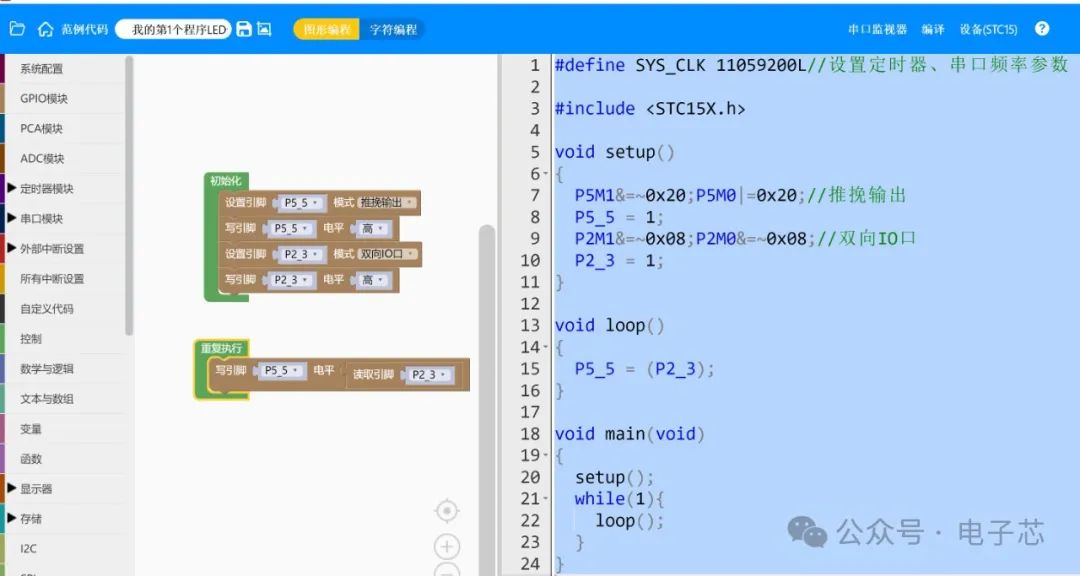Many students have such concerns::“Teacher, my English is not good, will I be unable to learn microcontrollers?Will it be difficult to learn programming because my English is poor?” I have been teaching microcontrollers for many years, and every year students ask this question. Today, I will talk about this matter, the relationship between microcontroller programming and English, is actually not that scary, the impact of English is far less than imagined.
1. Where is English used in programming?
The keywords are fixed symbols.
For example, if (if), for (loop), while (when…) these programming keywords are essentially code symbols. Just like remembering “+ represents addition, you only need to know their usage, without needing to study English grammar. The commonly used keywords do not exceed 30, which is much simpler than memorizing a vocabulary list. Don’t you have to memorize thousands of words to learn English?
Code comments can be written in Chinese.
A good programming habit is to add comments to the code, to explain the functionality of the code. Current development tools, such as Keil and Arduino IDE, all support Chinese comments.

Variable names can be customized.
Variable names can also use pinyin abbreviations, for example, using deng (light) to replace led, and using yanshi (delay) to replace delay. Although not recommended, it is indeed feasible.

2. Why can one learn even with poor English?
Microcontroller programming is more like building with blocks.
The focus is on understanding hardware principles such as pin control, timers, and interrupts. Just like when we assemble Lego, the key is to connect these modules correctly, and the English labels in the manual do not affect the assembly process.
Development tools are becoming increasingly intelligent.
Now, IDE has auto-completion features, where entering the first few letters can prompt the complete code. For example, entering pinM, the software will automatically complete pinMode(), so there is no need to spell it out completely.
Start with Chinese programming.
I mentioned in a previous article that Chinese programming can start with tools like Tianwen and other Chinese graphical programming tools, while using Chinese graphics and comparing with C language, gradually transitioning to C, which helps shorten the learning cycle.

3. Advice for beginners.
Accumulate 20 high-frequency words is enough.
Key words to master:void, int, char, float, if, else, for, while, return, true/false and other basic vocabulary. The meanings of these words in programming differ greatly from everyday English, so remember them as special symbols.
Make good use of translation tools.
When encountering error messages that are hard to understand, learn to use your phone to take screenshots for translation, which is more efficient than looking up word by word, methods are important.
English is like a screwdriver in a toolbox, it is convenient to use, but you can still complete most tasks without it. The core of learning microcontroller programming is:
Understanding hardware principles
Mastering programming logic
Daring to debug hands-on
Programming is the language spoken to the microcontroller, the important thing is to make the chip understand, not to make an English speaker understand. Instead of worrying about poor English, it is better to immediately pick up the development board, when you write the first program to blink an LED, you will understand: those jumping 0101 binary codes are the language that the microcontroller can understand, and those English symbols have already become conditioned reflexes through repeated practice. English is just a backpack for tools, what you really need to use are the screwdriver and multimeter inside the backpack.